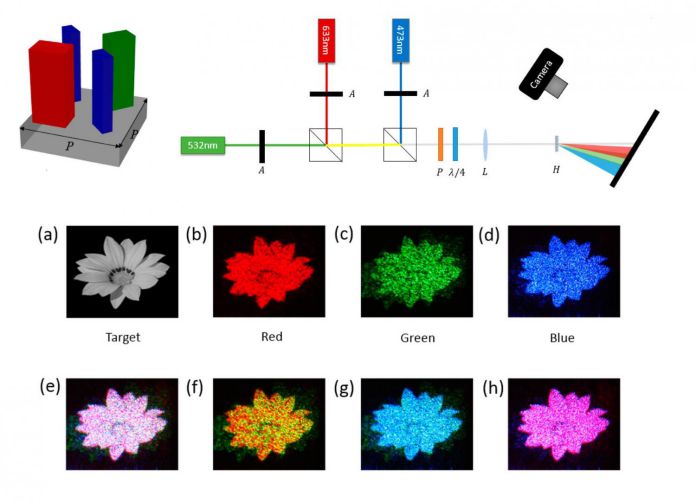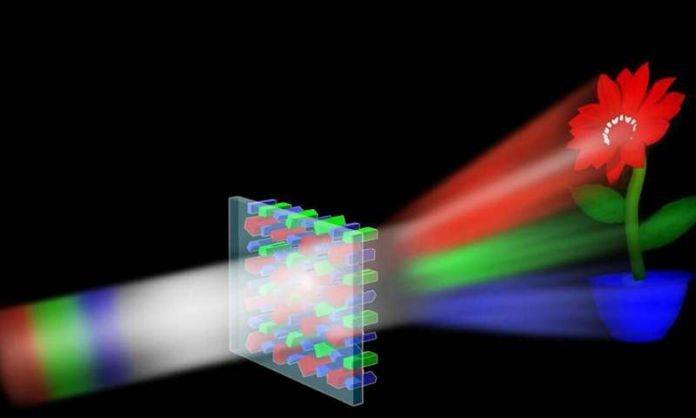Researchers from Peking University and the National Center for Nanoscience and Technology have discovered a novel way of creating a highly effective coloured hologram. They arranged lots of nanoblocks to design pixels on metasurface. This method has magnitude order with higher reconstruction effectiveness.
The pixels on the metasurface composed with three silicon nanoblocks with accurate dimensions. Both response with three different wavelengths of three different colours i.e., red, green, blue. To upgrade the effectiveness for blue light, two known nanoblocks responds to the blue light. Those nanoblocks are arranged in each pixel, along with one nanoblock for a red light and one for the green light.
When red, green and blue lasers brighten with a hologram, then every nanoblocks manages the phase of its corresponding colour. Minimizing the intercommunication between nanoblocks was the key achievement of this research. Thus, the nanoblocks function almost independently of each other. After that, researchers adjust nanoblocks in different ways, thus they are able to change the light’s phase manipulation, resulting in different holographic images.
Because of basic repeating, a subwavelength unit of the larger metasurface that constitutes the entire hologram, every pixel can be said as metal molecule. The meta-molecules allows metasurface to manage light in ways that are not possible without modern nanoscale design.

According to researchers, the nanoblock approach could be used in creating two different types of holograms. They are an achromatic hologram and highly dispersive hologram. In an achromatic hologram, the complete reconstructed image displayed in one colour. By adjusting the relative input of the three colours, a wide spectrum of colours can be achieved. On the other hand, different parts of the reconstructed image have different colours displayed in the highly dispersive hologram.
Yan Li, at Peking University, said, “Our work provides an approach for realizing the almost independent manipulation of phase for different visible wavelengths in subwavelength resolution and in transmission mode due to the absence of interactions between nanoblocks within one meta-molecule, which allows for particular functionalities.”
This new coloured hologram has various potential applications where horrible wavefront manipulation is required. It could be used in colour holograms, achromatic lenses, and anti-counterfeiting planar optical devices.
Weiguo Chu at the National Center for Nanoscience and Technology said, “Based on this idea and approach, novel real planar optical devices may be fabricated to realize many novel or extra functions in the future.”
